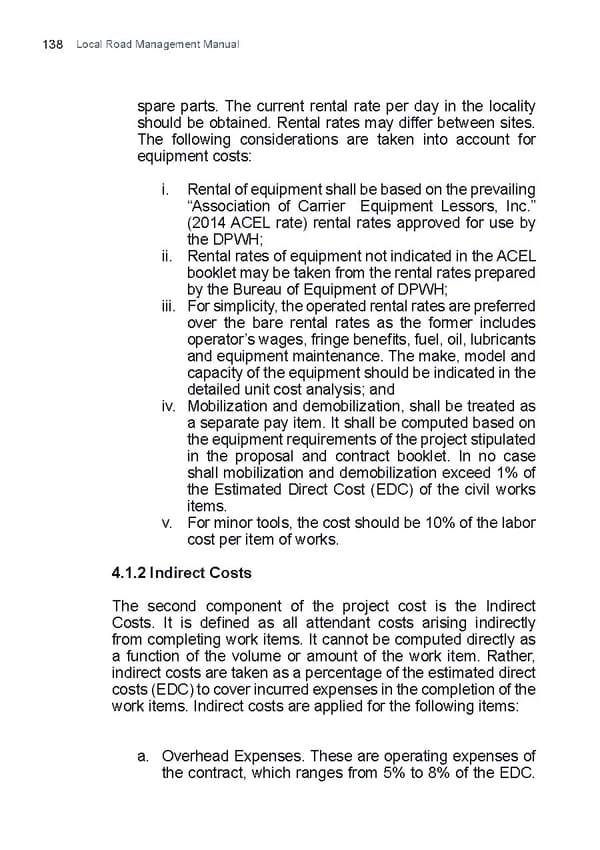Local Road Management Manual 138 spare parts. The current rental rate per day in the locality should be obtained. Rental rates may differ between sites. The following considerations are taken into account for equipment costs: i. Rental of equipment shall be based on the prevailing “Association of Carrier Equipment Lessors, Inc.” (2014 ACEL rate) rental rates approved for use by the DPWH; ii. Rental rates of equipment not indicated in the ACEL booklet may be taken from the rental rates prepared by the Bureau of Equipment of DPWH; iii. For simplicity, the operated rental rates are preferred over the bare rental rates as the former includes operator’s wages, fringe benefits, fuel, oil, lubricants and equipment maintenance. The make, model and capacity of the equipment should be indicated in the detailed unit cost analysis; and iv. Mobilization and demobilization, shall be treated as a separate pay item. It shall be computed based on the equipment requirements of the project stipulated in the proposal and contract booklet. In no case shall mobilization and demobilization exceed 1% of the Estimated Direct Cost (EDC) of the civil works items. v. For minor tools, the cost should be 10% of the labor cost per item of works. 4.1.2 Indirect Costs The second component of the project cost is the Indirect Costs. It is defined as all attendant costs arising indirectly from completing work items. It cannot be computed directly as a function of the volume or amount of the work item. Rather, indirect costs are taken as a percentage of the estimated direct costs (EDC) to cover incurred expenses in the completion of the work items. Indirect costs are applied for the following items: a. Overhead Expenses. These are operating expenses of the contract, which ranges from 5% to 8% of the EDC.
 Local Road Management Manual Page 138 Page 140
Local Road Management Manual Page 138 Page 140